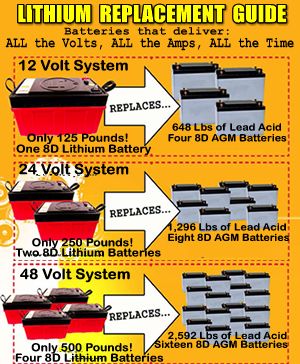Forum Discussion
11 Replies
- MEXICOWANDERERExplorerThose battery packs have a raft of sensors and harness to be plugged into a lithium ion battery charger management control unit.
It's not just to limite current or voltage. It's to safety ISOLATE cells that may overheat before they start melting stuff like steel and humans. Ask Boeing about lithium battery monitoring and control.
So a person buys a multi-thousand dollar battery pack. It comes with a huge harness socket to all the sensors. Ahhh Jeez. Watcha gonna dew about the plug side? A control unit has to be custom configured for a specific battery pack. More Tesla gear? Ooooooo this ain't gonna be cheap! - road-runnerExplorer IIII suspect the 400 volt level was chosen as a match for a 240 volt inverter, since the peak of 240 volts RMS is ~340 volts. A 200 volt battery would be a better match for the 120 volt inverters used in RVs. Since the inverters we now use have to first step the voltage up to at least 170 (for PSW), a high voltage battery would eliminate the efficiency loss of the voltage step up.
- 2oldmanExplorer II
Roadpilot wrote:
Dang.. I guess I'm not done yet!
Using the energy from a high voltage battery bank is much more efficient then (sic) 12, 24 or 48 volt battery banks.
Not real sure about your statement. You'd have to kick 400v down to 120v. - pianotunaNomad III13 cells @ 400 amps works out to 48 volts. That yields 19200 watts of which 80% or 15360 watts is usable.
Since we don't have to worry about the 100% recharge (and in fact that 100% recharge may be bad for LI) that gives a rather nice cushion.
- MrWizardModeratormoved from technology corner
- If I was going over 1500 watts of solar I would be looking at Powerwall for an RV vs a half dozen L-16.
- John___AngelaExplorer
KD4UPL wrote:
The battery is around 400 volts. They are working with Solar Edge and Fronius to produce inverters for it but they aren't available yet. When they are you probably could put one in an RV but it would be rather expensive.
I guess. But an Onan Diesel is around 10,000 bucks. Would you even need one? - KD4UPLExplorer IIThe battery is around 400 volts. They are working with Solar Edge and Fronius to produce inverters for it but they aren't available yet. When they are you probably could put one in an RV but it would be rather expensive.
- RoadpilotExplorerI think Tesla's battery technology would be a good fit with RV's. First it's not very efficient to store and use energy at either 6 or 12 volts. Higher voltages are much better from an I squared R loss point of view.
Charging them would be very easy when at a campground with full hookups. It would also be easy when traveling if the generator was used. Alternators could be designed to output 110 vac or lower voltage alternators could be used with dc to Ac converters to charge them while traveling.
Using the energy from a high voltage battery bank is much more efficient then 12, 24 or 48 volt battery banks.
Bottom line is storing and using energy at higher voltages is good. High tension lines are high voltage for a reason. - John___AngelaExplorerWe have a 17 KW battery in our EV. Its actually 20 but mercedes derates out of the box. It occupys a good portion of the bottom of the vehicle. It would be easy to fit in a motorhome. The trick would be to get the electronics together to invert the output to 120 volts. It will be interesting to see how EV battery packs make it to secondary markets as they are harvested from car wreck write offs of all the EV's that are making it to market now. Even some of the early Prius units from 12 years ago that only had 2 to 3 KW's will have market value. The first leafs with 24KW packs had some overheating issues in hot climates so a number of them will be getting changed out under warranty although I suspect nissan will be keeping them and recycling them. Gotta figure though. Take an electric smart car like ours. Its expected to lose 20 percent of its capacity over 10 years. So lets say in 15 years when the car is sold off and the battery pack still has 12 to 14 KW. There is already an industry springing up around re-purposing EV batteries. A 14 KW battery would still be a heck of an addition to an RV. Read air conditioning for an entire night with no running of the genny etc. Should be an interesting decade.
About Technical Issues
Having RV issues? Connect with others who have been in your shoes.24,343 PostsLatest Activity: Dec 16, 2025